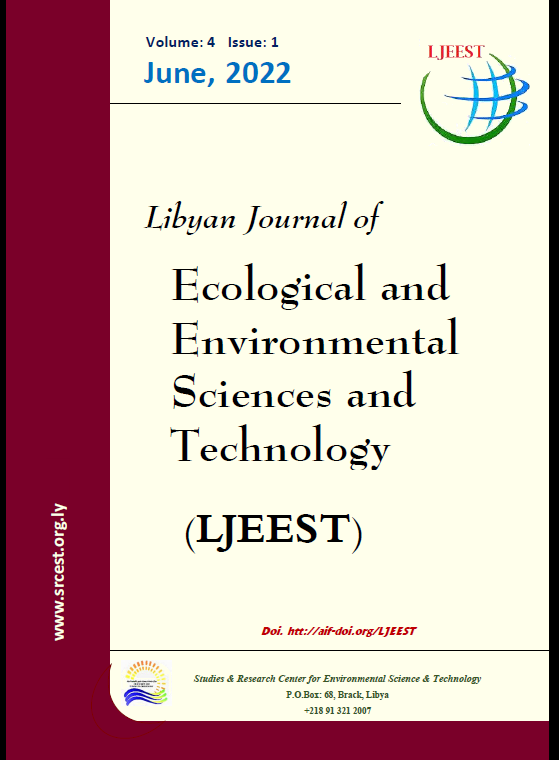The Dynamics of Seed Soil Bank Dynamics in The Libyan Rangeland Soils
South Jabal Al-Akhdar region as a case study.
DOI:
https://doi.org/10.63359/02mgva02Keywords:
Temporal Changes, Rangelands, Spatial Changes, Soil Seed Bank, Seed Bank Density, Seed Bank VitalityAbstract
This study was conducted during 2019-2020 in the rangeland areas south of El-Jabal El-Akhdar region; northeast Libya. The study area extends from the Aziat area in the east to the Wadi Adwan southwest of the Kharouba village and covers an area of about 15,600 km2. The earth surface descends southwardly with an altitude range from 740 in the north to 120 m above sea level. in the south. The study area was divided into 15 sectors oriented from the north to south; ten in open areas and five in the valleys. Four soil samples from each sector with a total of 60 samples (20 from valleys and 40 from open areas) were taken once at the end of autumn and others at the end of spring; the total = 120 samples. The study aimed to estimate the density (seed/m2) and viability (%) of the seeds, and to identify spatial (between regions) and temporal (between seasons) differences of the soil seed bank (dynamics). The floating in a chemical suspension method was used with three replications for each sample, then the average was computed. The study showed that the region has low density and viability of the soil seed bank, where the overall average of seed density was 882 seed/m2 and viability 24%; the valleys and western regions of the study area showed relatively better results than the rest of the open areas, especially the central and eastern sectors. The density and viability of the seeds also showed very significant differences, both between the open areas and valleys and between the seasons of the year. There were also very significant differences in seed density and viability among open area sectors as well as among valleys. This study indicates the low density and viability of the region's soil seed bank and its high dynamics. This could be attributed to the severity of vegetation degradation and the dominance of annual and short-lived species, which produce big numbers of seeds that vary depending on the seasons, location features, and changes in the characteristics of the local climate in each region
Downloads
Published
Issue
Section
License

This work is licensed under a Creative Commons Attribution-NonCommercial 4.0 International License.














